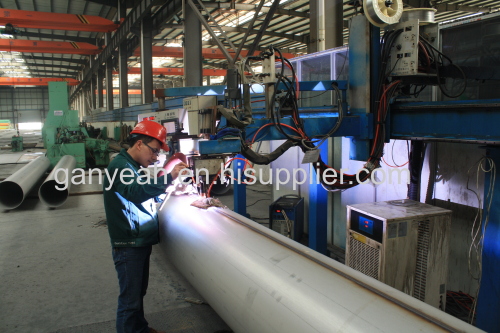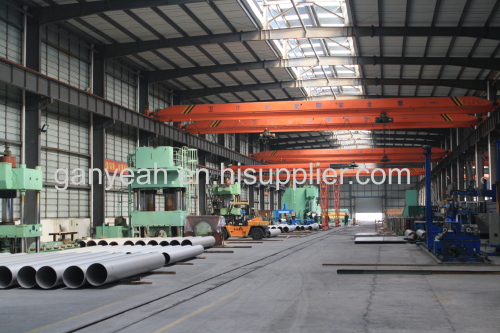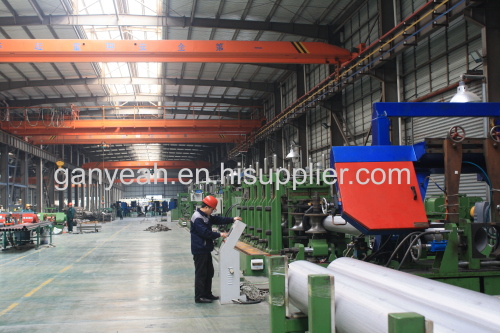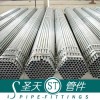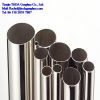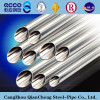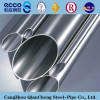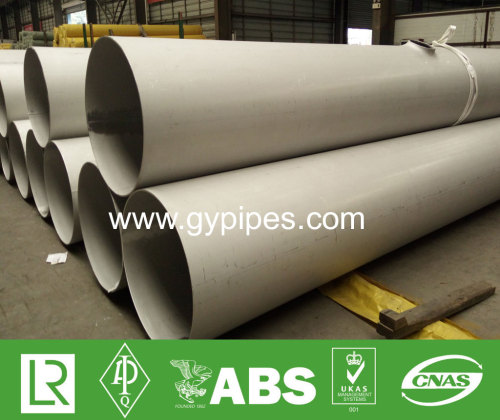HOW TO SUCCESSFULLY WELD STEEL PIPE TO Stainless Steel 304 316 Pipes?
In welding industry, it is always preferred to have both the base materials of same chemical composition and mechanical properties. But due to the economic considerations or service conditions, the necessity for welding two dissimilar metals or alloys arises in a fabrication shop. For instance, welding a SS 304 inner lining material for a mild steel process tank proves to be an economical choice without compromising the service conditions.
Welding a steel pipe with stainless steel pipe is a very common scenario in a fabrication industry. Infact, both TIG and MIG welding procedures for dissimilar materials have been standardized and AWS codes are available. The success of a welding joint in dissimilar metals depends squarely on two factors –
Strict adherence to the defined welding procedures
Selection of filler materials.
Chemical properties: As the objective is to attain a weld deposit that is compatible with both the materials, it is easily accomplished with SS 309. If SS 308 instead of SS 309 had been deployed in the service, it would have led to a low ferrite level and also paved the way for the formation of martensite after cooling.
Mechanical properties: It is usually dictated by the heat energy that is created during the welding procedure. The general rule of welding is that the mechanical property of the filler wire should match or slightly exceed that of the weaker of the two materials. And SS 309 as the filler material, this condition is perfectly met.
Corrosion resistance: Using SS 309 absolutely meets the requirement of maintain the corrosion resistance property in weld joint as well as the SS base material
By restricting restrained joints as they cause high stresses.
But if joints are highly restrained, usage of medium heat input and preheating would delay the cooling time.
Immediately insulating the weld joint after the completion of last pass would result in slow cooling and thereby avoid thermal cracking.
It should be borne in the mind that the latter has the tremendous potential to restrict complications arising out of corrosion resistance, chemical, and mechanical properties. Let us explain this crucial aspect through an example. While joining a SS 304 pipe with a mild steel pipe, highly alloyed SS 309 is usually recommended as the filler wire.
Having said that, the choice of filler material also depends upon the service temperature. When the weld joints are made for serving high temperature applications, the difference in thermal expansion coefficients of the filler and base materials can create havoc and lead to fatigue cracking. The weld joint would have serious compromise in mechanical properties and corrosion resistance and this can be easily attributed to the formation of brittle and inter-metallic phase that has high hardness (sigma phase). How can these cracks be avoided?
Alternatively, it would be a wise choice to have nickel based filler material as it produces weld joints that has low thermal expansion coefficients than stainless steel.
Corrosion protection: It should be noted that the non-protection of weld joints may lead to corrosion and over a period of time may seriously affect its mechanical properties. As a standard practice in industry, steel pipes are applied with any protective coating or paint and stainless steel pipes are kept bare. But what about the weld bead? When the protective coating of steel pipes is not extended to cover the well bead completely, bimetallic corrosion begins. Hence the weld beads also need to properly covered and only the stainless steel portion is exposed to ensure the non-formation of galvanic cells in the gradient portion of weld joint.
In a nutshell, welding dissimilar materials demands in-depth analysis of welding information, clear data of the base materials and right selection of filler wire. No doubt it is a challenging job, but can be accomplished with careful planning.
